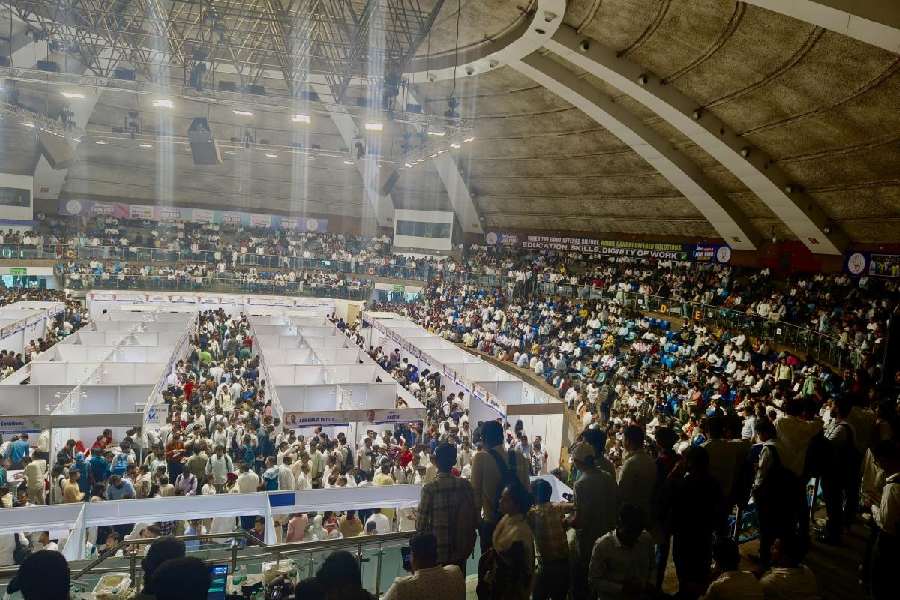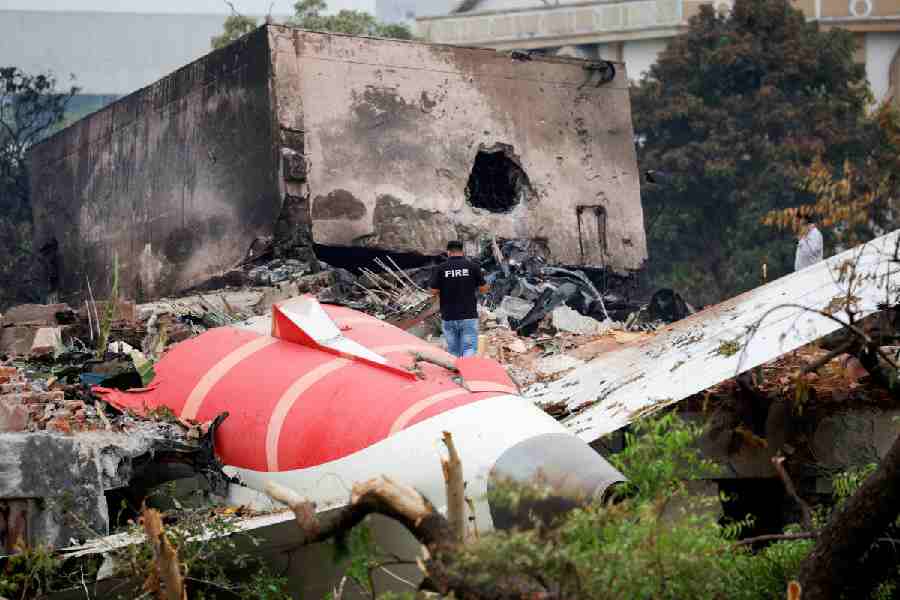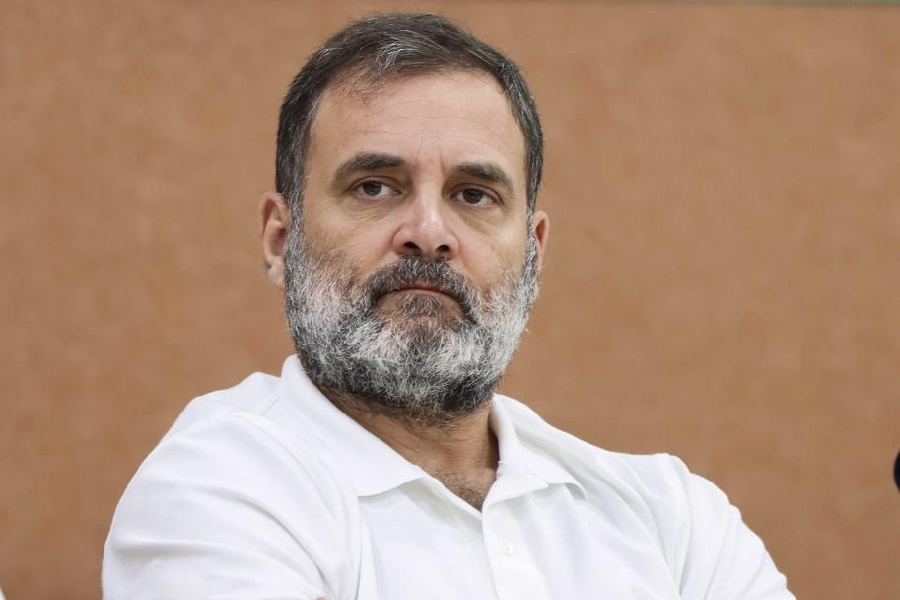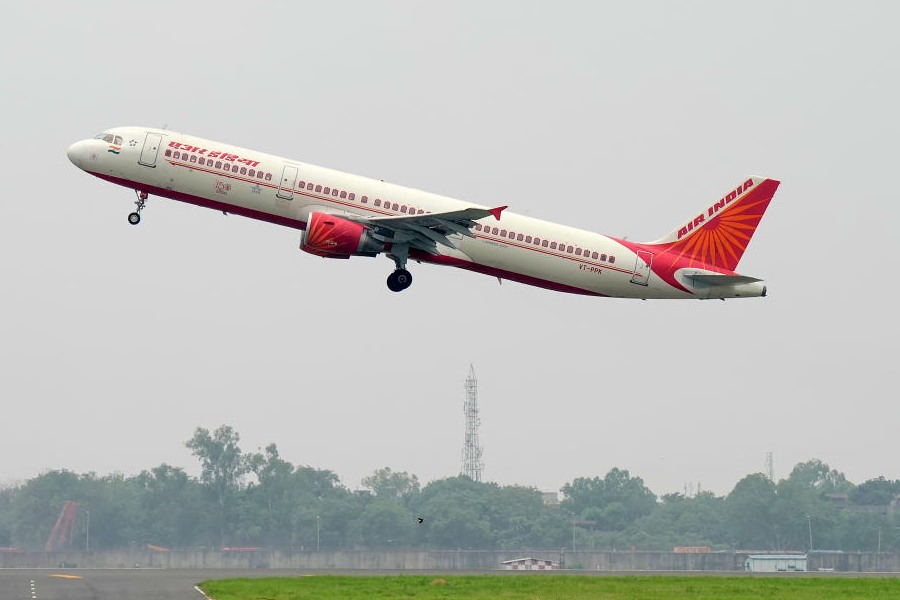 |
Bero (Ranchi), Aug. 19: An hour's drive from Ranchi along Ranchi-Gumla Road (NH-23), the monotony of lush green fields and swaying paddy plants is harshly broken by more than a hundred giant steel towers at the newly constructed grid sub-station of Power Grid Corporation of India (PGCIL) at Gargaon village under Bero block.
Once inside, it is scary.
Ten reactors, two giant transformers, each with a capacity of 500MVA (mega volt ampere), and more than 100 giant steel towers make up a metal jungle as sharp crackling sounds emanate from the overhead wires.
Technicians point out that the wires were carrying at least 8lakh volt of electricity.
At the control room, officials explained how it worked. Presently, power was flowing to Jharkhand from an NTPC plant at Chhattisgarh which was being diverted to the grid at Namkum in Ranchi.
Equipped with the two 500MVA transformers, the Bero grid station is connected through a 765KVA high voltage line to Chhattisgarh and another 400MVA line to Gaya in Bihar via Chandwa in Jharkhand.
This network would facilitate transfer of power from any part of the country to Jharkhand and vice versa.
“The 765/400KVA (kilo volt ampere) grid sub station at Bero is the largest and the safest of its kind. It will be capable of handling a load of 5,000MW plus,” an official explained.
The biggest advantage of the Bero grid station, located some 40km from Ranchi, was that in the event of a grid collapse, the station would remain free from disturbances. The station would help supply power to the two thermal power stations at Patratu and at Tenughat so that generation can commence at the earliest.
Built at a cost of around Rs 900crore, PGCIL officials, speaking on condition of anonymity, revealed that construction had been completed within record time of 18 months.
Prime Minister Narendra Modi is scheduled to dedicate to the nation, the grid sub station during his visit to Ranchi on August 21.
Since Gargaon village does not have a suitable ground for a chopper to land, Modi will do the honours from the Prabhat Tara (School) grounds at Dhurwa, Ranchi.
Though the Prime Minister will not be visiting the grid sub-station at Gargaon village, PGCIL officials were leaving nothing to chance.
Inside the sub-station, labourers were engaged in planting trees on both sides of the road leading to the complex spread over 90 acres.
Others were painting the giant reactors, spread out across the campus, while yet another group of the labourers were laying a concrete road and sprucing up the campus.
However, not many local residents realised the importance of the PGCIL project.
Two girls, Sujita and Karuna, working on a paddy field opposite the entrance to the complex, said that they had little knowledge of what the giant structure was all about.
“Perhaps it is a power station, supplying power,” Sujita told The Telegraph. Her concerns lay elsewhere.
She pointed out that with little rains so far, they were afraid that most of the freshly sprouting paddy seedlings would die. “We get around six months fodder from this small field. This year, we would have to go hungry unless the rain god is kind to us,” she added.










